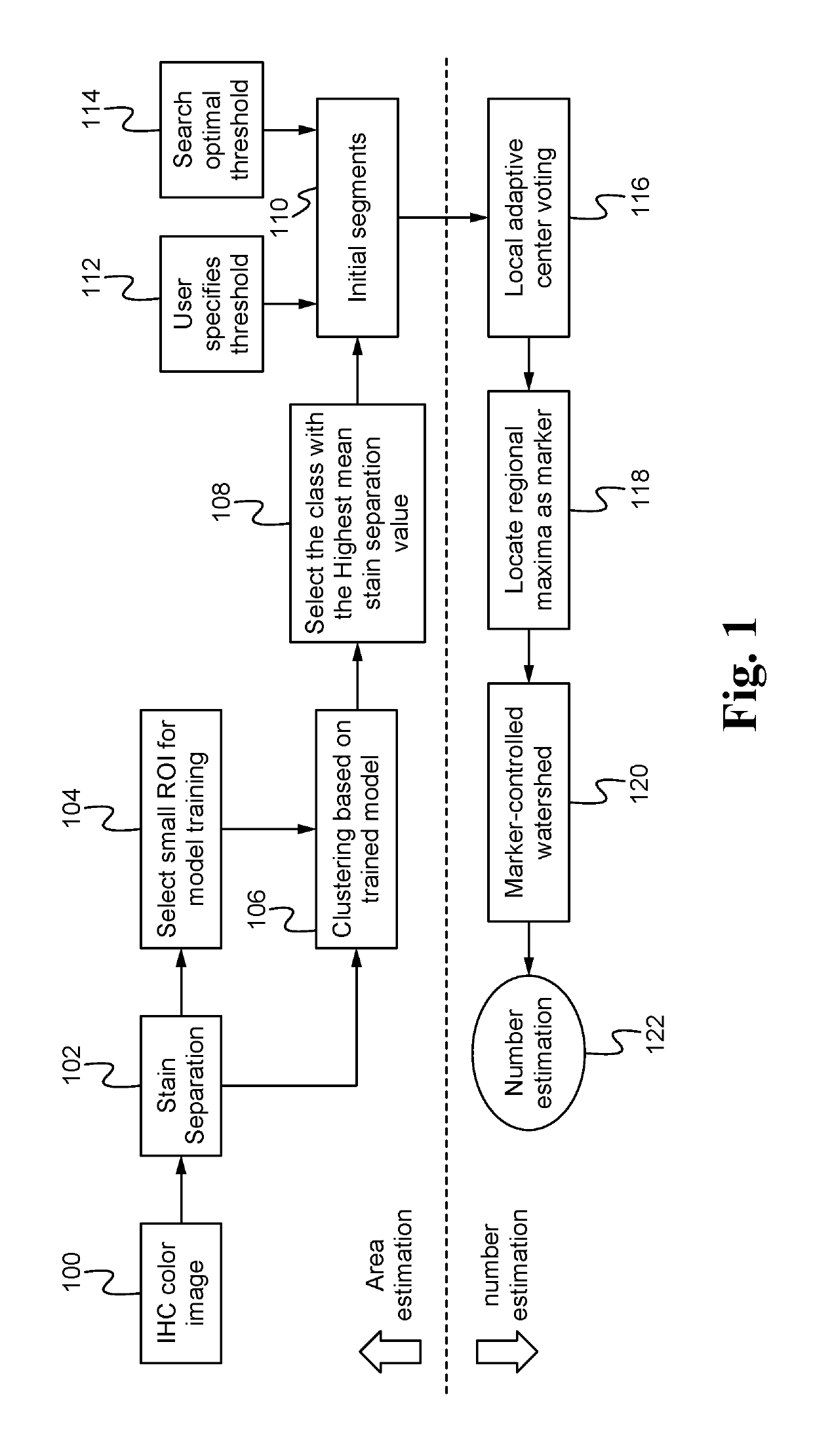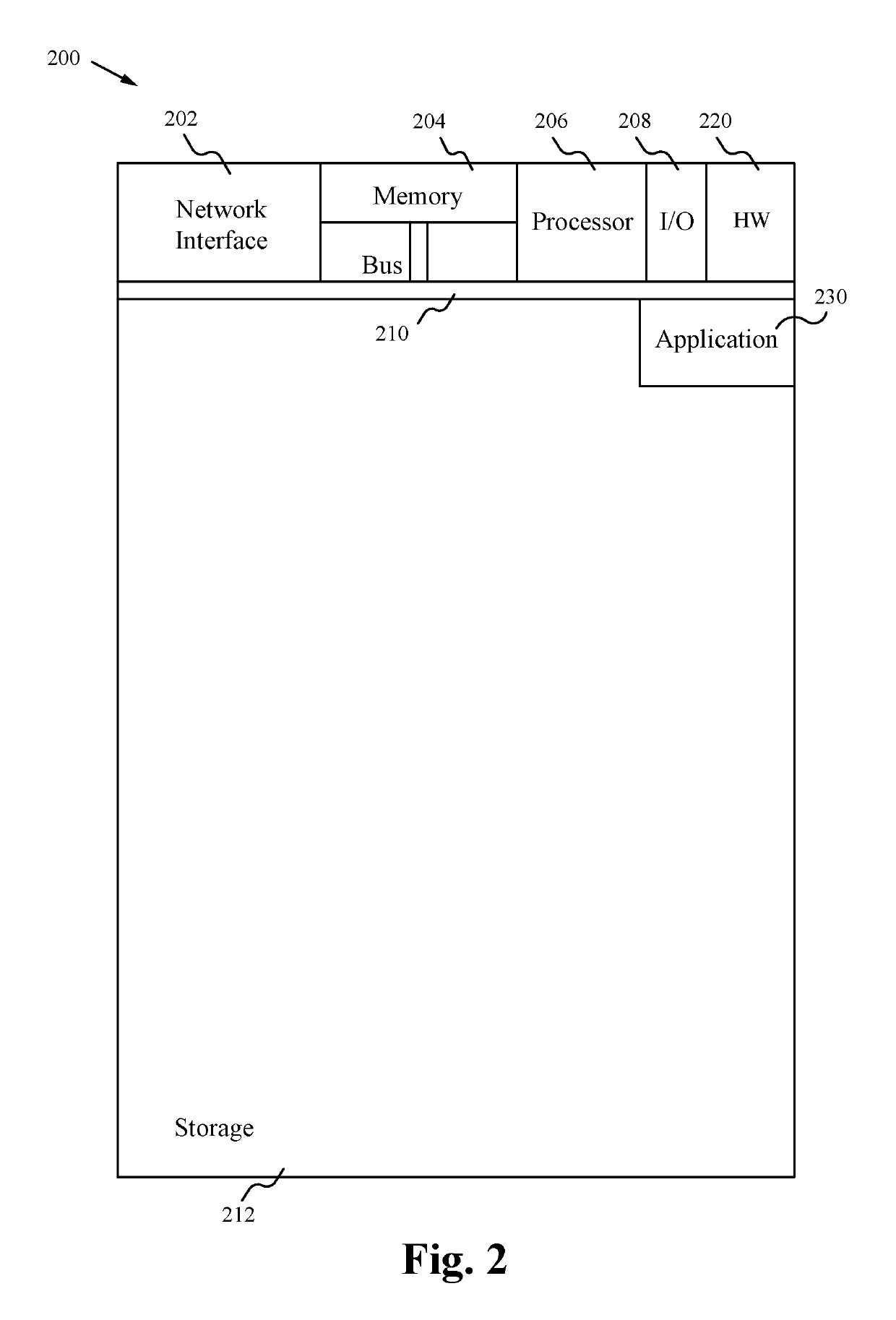Automated nuclei area/number estimation for IHC image analysis
a nucleus area/number estimation and image analysis technology, applied in the field of medical imaging, can solve the problems of increasing the difficulty of number estimation, fast speed, and inability to provide nucleus number estimation, and achieve the effect of improving the image quality of stain separation
- Summary
- Abstract
- Description
- Claims
- Application Information
AI Technical Summary
Benefits of technology
Problems solved by technology
Method used
Image
Examples
Embodiment Construction
[0014]An automated nuclei area and number estimation method and system enable improved Immunohistochemistry (IHC) image analysis.
[0015]The automated nuclei area and number estimation system uses a two-stage estimation framework: nuclear area estimation (e.g., number of nuclear pixels) followed by nuclear number estimation. Nuclear area is estimated from a binarized patch or patches, and these segmented patches provide local shape features which are able to facilitate number estimation.
[0016]To better distinguish a nuclear target and artifacts, the image quality of stain separation is enhanced by performing adaptive clustering based on a user-selected Region of Interest (ROI) via model training / selection.
[0017]To estimate nuclei area, stain separation is applied to separate two dominating color components, one corresponding to positive stains and the other one corresponding to negative stains. Area estimation is performed based on each color channel by adaptive thresholding. The syst...
PUM
| Property | Measurement | Unit |
|---|---|---|
| area | aaaaa | aaaaa |
| color | aaaaa | aaaaa |
| color image | aaaaa | aaaaa |
Abstract
Description
Claims
Application Information
 Login to View More
Login to View More - R&D
- Intellectual Property
- Life Sciences
- Materials
- Tech Scout
- Unparalleled Data Quality
- Higher Quality Content
- 60% Fewer Hallucinations
Browse by: Latest US Patents, China's latest patents, Technical Efficacy Thesaurus, Application Domain, Technology Topic, Popular Technical Reports.
© 2025 PatSnap. All rights reserved.Legal|Privacy policy|Modern Slavery Act Transparency Statement|Sitemap|About US| Contact US: help@patsnap.com


